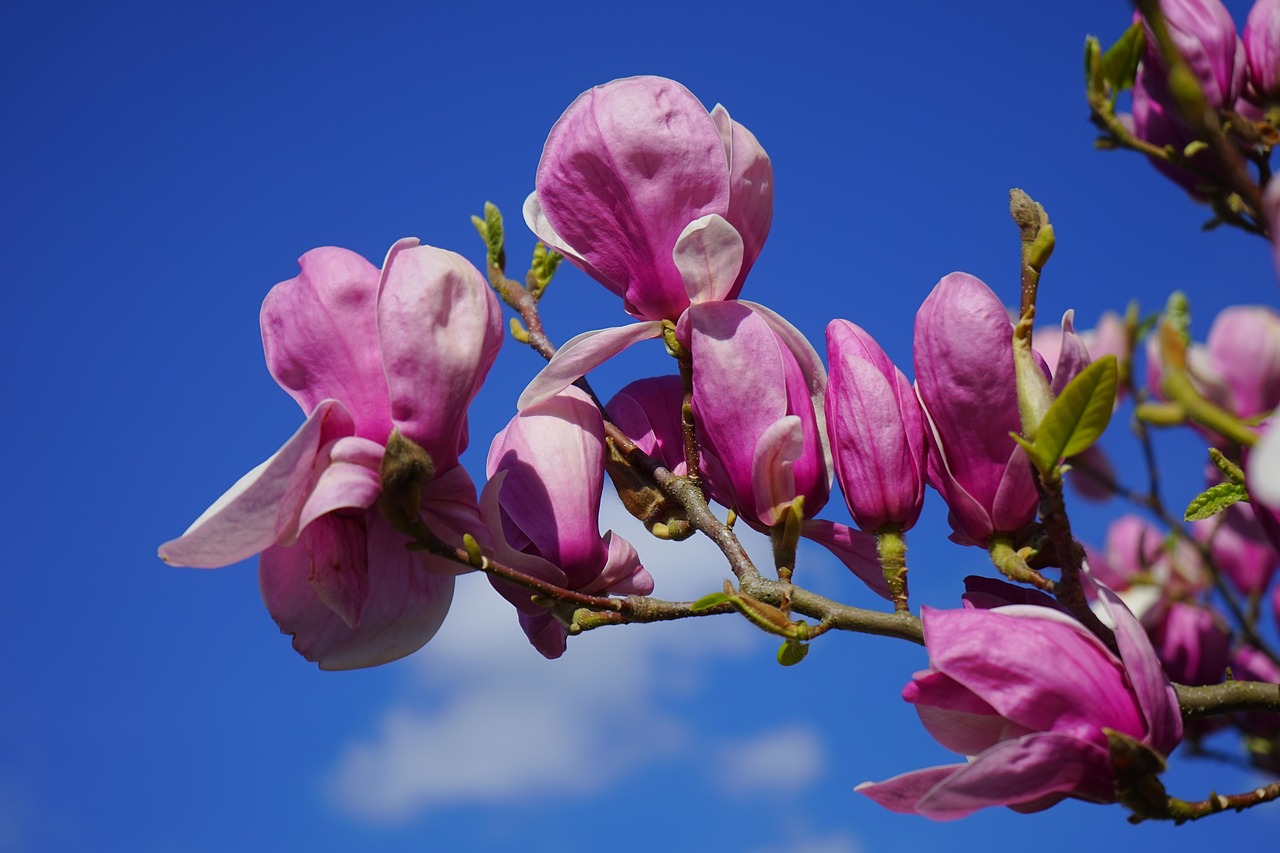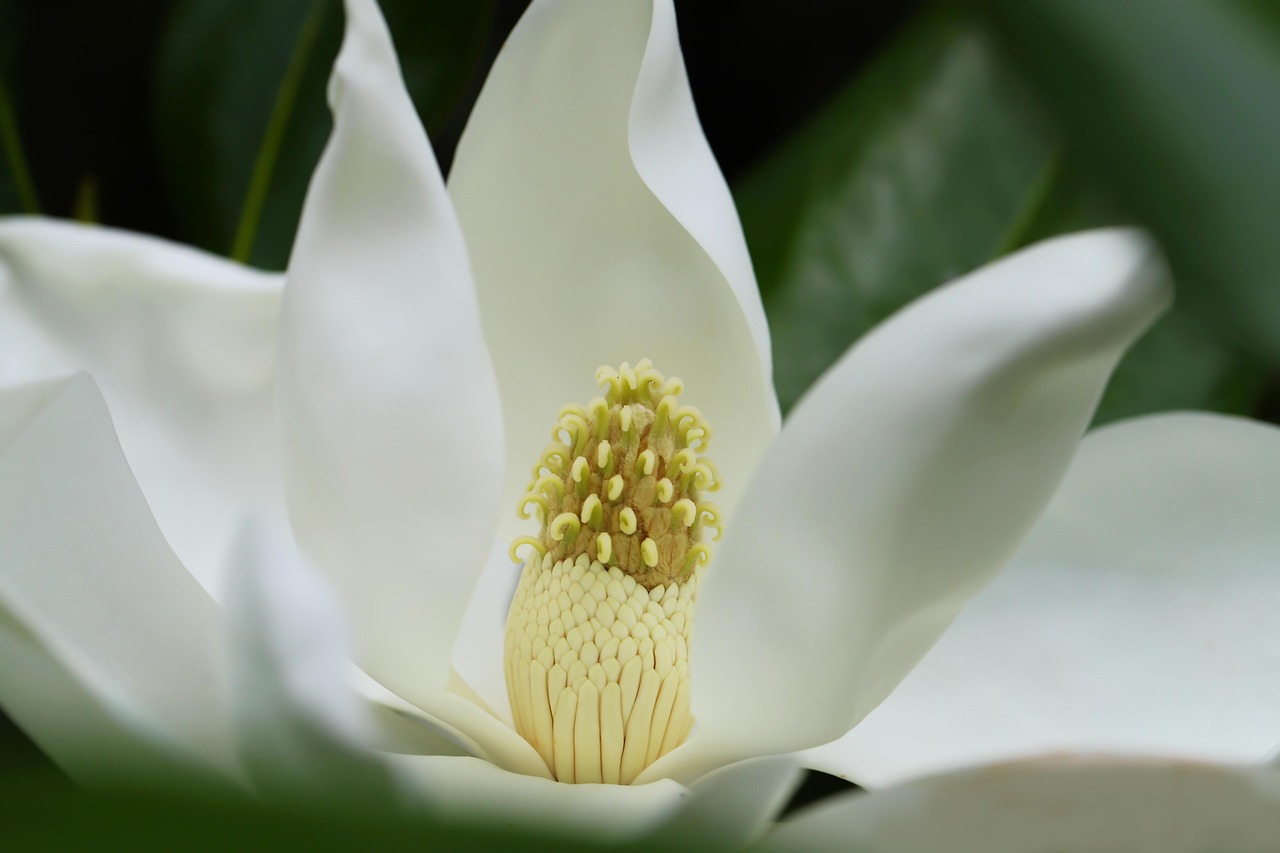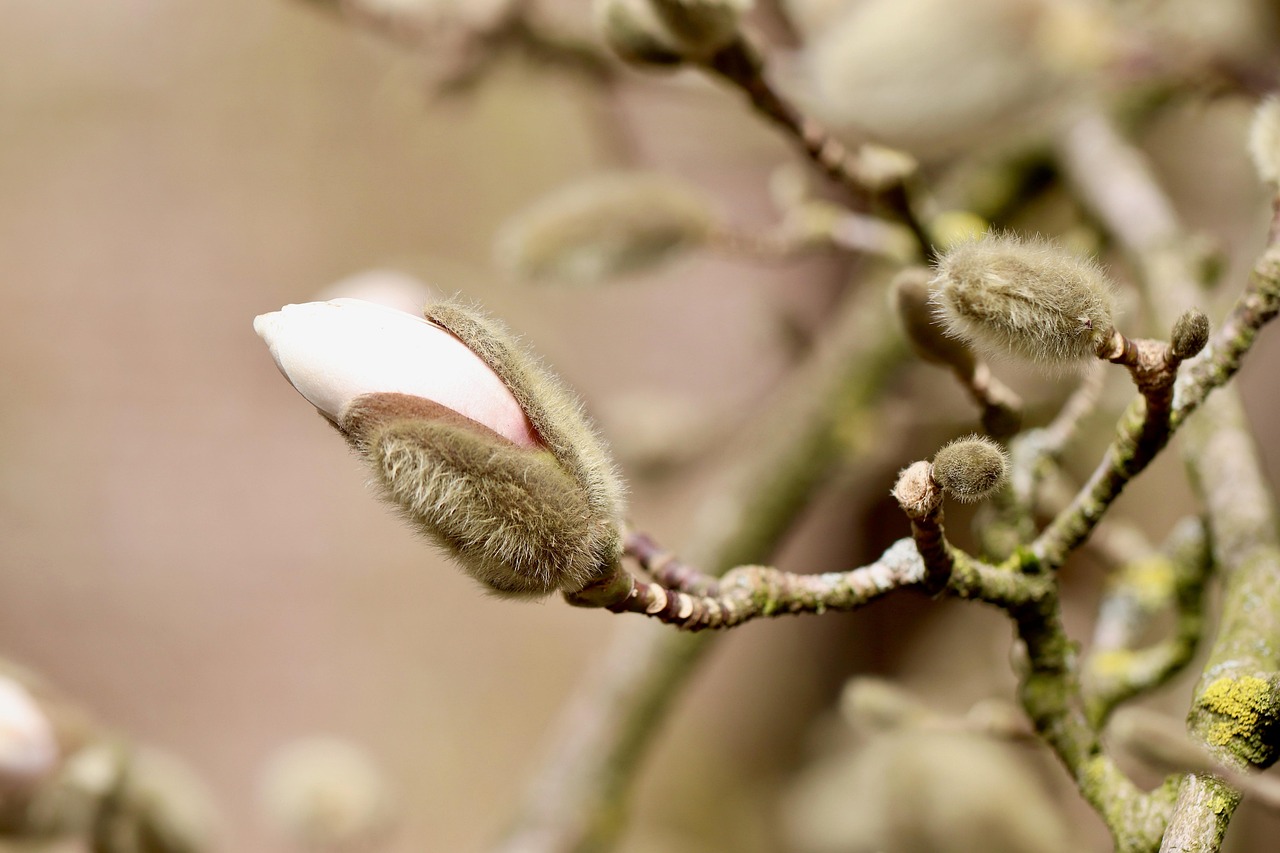Yes, magnolia trees can grow in Colorado, but they require specific care and attention due to the state’s unique climate conditions. Choosing the right species and understanding local growing tips are essential for successful cultivation.
Magnolia trees are beloved for their stunning blossoms and lush foliage. They are often associated with warmer regions, which might lead some to believe they cannot thrive in the varying climates of Colorado. However, with the right approach, it is possible to grow several species of magnolia in this state. Colorado’s climate ranges from semi-arid in the eastern plains to more humid conditions in the western mountains. Understanding these variations is crucial for selecting the appropriate magnolia variety and ensuring its successful growth.
The most suitable magnolia species for Colorado include the star magnolia (Magnolia stellata) and the southern magnolia (Magnolia grandiflora). Each of these types has unique characteristics that may influence their adaptability to Colorado’s weather. For example, the star magnolia is smaller and more cold-hardy, making it a great choice for home gardens in colder areas. On the other hand, the southern magnolia is more tolerant of heat and humidity but may struggle during extreme winter conditions.
Understanding Colorado’s Climate

To successfully grow magnolia trees in Colorado, it is essential to understand the state’s climate zones and typical weather patterns. These factors will significantly influence growth, flowering, and overall tree health.
| Climate Zone | Description |
|---|---|
| Zone 3 | Cold winters with temperatures dropping to -40°F. |
| Zone 4 | Cold winters with temperatures down to -30°F. |
| Zone 5 | Milder winters with temperatures reaching as low as -20°F. |
| Zone 6 | Mild winters with temperatures as low as -10°F. |
Understanding your specific climate zone is vital when selecting a magnolia species. The majority of Colorado falls within zones 3 to 6, with higher elevations experiencing colder temperatures. Gardeners in colder zones should prioritize cold-hardy varieties like the star magnolia.
In addition to temperature, other climatic factors such as rainfall and sunlight also influence magnolia growth. Colorado experiences a significant amount of sunshine, which is beneficial for flowering plants. However, the state also has dry conditions, especially in the eastern regions. Therefore, it is important to ensure that magnolias receive adequate water throughout their growing season.
Selecting the Right Location
Choosing the right location for planting magnolia trees is crucial for their success. Here are some tips to consider when selecting a site:
- Sunlight: Magnolia trees thrive in full sun. Aim for at least six hours of direct sunlight daily.
- Soil Quality: Ensure well-draining soil rich in organic matter. Amending the soil with compost can improve fertility.
- Protection from Wind: Plant in a sheltered area to protect young trees from harsh winds that can cause damage.
- Space: Allow sufficient space for growth since magnolias can reach significant heights and widths.
Following these guidelines will help create an ideal environment for your magnolia trees. Proper site selection is one of the keys to a thriving garden.
Planting time also plays a vital role in establishing healthy magnolia trees. Early spring or fall are ideal seasons for planting in Colorado, as this allows trees to establish roots before facing extreme summer heat or winter frost.
Watering and Maintenance
Once planted, magnolia trees require regular watering. This is especially important during the first few years as they establish themselves. Here are some watering tips:
- Frequency: Water deeply once a week during dry spells. Adjust frequency based on rainfall.
- Mulching: Apply a layer of mulch around the base to retain moisture and regulate soil temperature.
- Avoid Overwatering: Ensure proper drainage to prevent root rot.
Additional maintenance tasks include pruning, fertilizing, and monitoring for pests and diseases. Regularly inspect your magnolia tree for signs of stress or disease, such as leaf discoloration or wilting.
Fertilization Strategies for Magnolia Trees
Fertilizing magnolia trees is an important aspect of their care, especially in Colorado’s nutrient-deficient soils. Proper fertilization can promote healthy growth and vibrant blooms. Here are some guidelines for fertilizing your magnolia:
- Timing: Apply fertilizer in early spring before new growth begins. This timing helps to support the tree during its active growing season.
- Type of Fertilizer: Use a balanced, slow-release fertilizer with an N-P-K ratio of 10-10-10 or similar. Organic options, such as compost or well-rotted manure, can also be beneficial.
- Application Method: Spread the fertilizer evenly around the base of the tree, avoiding direct contact with the trunk. Water thoroughly after application to help the nutrients penetrate the soil.
Monitoring the tree’s growth and overall health will guide your fertilization schedule. If you notice yellowing leaves or stunted growth, it may indicate a nutrient deficiency that requires attention.
Pruning Techniques for Healthy Growth
Pruning is essential for maintaining the shape and health of magnolia trees. It helps encourage airflow, reduces disease risk, and removes any dead or damaged branches. Here are some effective pruning tips:
- Timing: The best time to prune magnolia trees is during late winter or early spring before new growth begins.
- Tools: Use clean, sharp pruning shears or loppers to make precise cuts. This minimizes damage to the tree.
- Technique: Focus on removing dead, diseased, or crossing branches first. Aim to maintain a balanced shape and remove no more than 20% of the tree’s canopy at any one time.
When pruning, ensure that you make cuts at a slight angle just above a bud or lateral branch. This encourages healthy new growth while preventing water from pooling on the cut surface.
Pest and Disease Management
Magnolia trees can be susceptible to various pests and diseases, particularly in certain conditions. Regular monitoring and prompt action can help mitigate these issues. Here are common pests and diseases to watch for:
Pests
- Magnolia Scale: This sap-sucking insect can weaken trees by extracting nutrients. Treatment options include horticultural oil sprays or insecticidal soap.
- Aphids: These small insects can cause leaf curling and distortion. They can be controlled with insecticidal soap or neem oil.
- Spider Mites: These tiny pests thrive in dry conditions and can cause leaf discoloration. Increasing humidity around the tree can help deter them.
Diseases
- Crown Gall: This bacterial disease causes galls on roots and stems. It is challenging to control, so prevention through proper planting techniques is essential.
- Leaf Spot: Fungal infections may lead to dark spots on leaves. Ensure good air circulation and avoid overhead watering to reduce humidity around the foliage.
For pest management, regular inspection is key. If pests or diseases are detected, take action promptly to prevent further damage. Early intervention often leads to successful recovery.
Winter Care for Magnolia Trees
Winter in Colorado can present challenges for magnolia trees, especially those that are not fully hardy. Implementing winter care strategies can help protect your magnolias during the colder months:
- Mulching: Apply a thick layer of mulch around the base of the tree to insulate roots and retain moisture. Organic materials like wood chips or straw work well.
- Watering: Continue watering during dry spells in winter. Moisture helps prevent desiccation during cold weather.
- Wrapping: For young trees, consider wrapping the trunk with burlap or protective fabric to shield against frost cracks and sunscald.
Providing these winter protections will help ensure that your magnolia trees emerge healthy and ready for growth once spring arrives.
Choosing the Right Magnolia Variety for Colorado
The choice of magnolia variety can significantly impact your success in growing these beautiful trees in Colorado’s diverse climates. Here are some recommended varieties along with their characteristics:
- Star Magnolia (Magnolia stellata): This small tree blooms early in spring with fragrant white flowers. It is highly cold-hardy and suitable for colder zones.
- Saucer Magnolia (Magnolia x soulangeana): Known for its large, showy flowers, this hybrid does well in warmer areas but can struggle in extreme cold.
- Southern Magnolia (Magnolia grandiflora): This evergreen variety offers beautiful blooms and glossy leaves but may require extra protection in colder regions.
Selecting a variety that matches your local climate conditions will enhance your chances of having a thriving magnolia tree in your garden.
The

right care, attention, and knowledge about magnolia trees specific to Colorado’s climate will help you cultivate these stunning trees successfully. Enjoy the beauty they bring to your landscape!
Companion Planting with Magnolia Trees
Com

panion planting is an effective strategy that can enhance the growth and health of magnolia trees. By choosing the right plants to grow alongside magnolias, you can create a thriving garden ecosystem. Here are some beneficial companions for magnolia trees:
- Azaleas: These flowering shrubs thrive in similar conditions as magnolias. Their vibrant blooms complement the beauty of magnolia flowers.
- Camellias: Another evergreen option, camellias benefit from the shade provided by larger magnolias while adding more color to your landscape.
- Hostas: These shade-loving perennials do well in the dappled sunlight under magnolias and bring lush greenery to the garden.
- Ferns: Ferns appreciate the same soil conditions as magnolias and can help create a layered, naturalistic garden look.
When planning your garden layout, consider the mature size of both the magnolia and its companions. Ensure that each plant has enough space to thrive without competing for resources.
Soil Preparation for Magnolia Trees
Proper soil preparation is critical for the successful growth of magnolia trees. The right soil conditions provide the foundation for healthy root development and nutrient uptake. Here are some essential steps for preparing the soil:
- Testing Soil pH: Magnolia trees prefer slightly acidic to neutral soil, with a pH level between 5.5 and 7.0. Conduct a soil test to determine your soil’s pH level.
- Improving Soil Quality: If your soil is too alkaline, consider adding organic matter such as compost or peat moss to lower the pH. This addition also improves soil structure and drainage.
- Drainage: Ensure that your planting site has good drainage. Magnolias do not tolerate standing water, which can lead to root rot. If necessary, amend heavy clay soils with sand or perlite.
- Nutrient Enrichment: Incorporate slow-release fertilizers or organic amendments into the soil before planting to provide essential nutrients for your magnolia tree.
By preparing the soil adequately, you will set your magnolia tree up for success, allowing it to establish strong roots and flourish in its environment.
Landscape Design Ideas Featuring Magnolia Trees
Incorporating magnolia trees into your landscape design can create stunning focal points and enhance overall aesthetic appeal. Here are some creative ideas for using magnolias in your garden:
- Specimen Trees: Plant a single magnolia as a specimen tree to draw attention in your front yard or as a centerpiece in a garden bed.
- Flowering Borders: Combine several magnolia trees with other flowering shrubs and perennials to create a colorful border that blooms throughout the seasons.
- Privacy Screens: Use a row of magnolias to create a natural privacy screen. Their dense foliage provides an effective barrier against noise and wind.
- Shade Gardens: Plant magnolias alongside shade-loving plants to create a peaceful retreat in your garden where you can relax during warm summer days.
The versatility of magnolia trees allows them to fit seamlessly into various landscape styles, from formal gardens to naturalistic settings. Consider their mature size when planning your layout to ensure they have room to grow without overcrowding other plants.
Common Challenges in Growing Magnolia Trees
While magnolia trees can thrive in Colorado, they may face several challenges that can affect their growth and health. Being aware of these potential issues can help you take proactive measures:
- Extreme Temperatures: Sudden temperature fluctuations can stress magnolia trees, especially during spring months when they bloom. Protect young trees with burlap or frost cloth during unexpected cold snaps.
- Drought Conditions: Colorado’s dry climate can lead to drought stress. Regular watering, especially during dry spells, is crucial for maintaining tree health.
- Pest Infestations: As mentioned earlier, pests like aphids and spider mites can pose risks. Regular inspections will help you catch infestations early and manage them effectively.
- Crown Gall Disease: This bacterial disease can affect the roots and stems of magnolia trees. If detected, remove affected areas and avoid planting in previously infected sites.
By understanding these challenges, you can implement strategies to prevent or mitigate their effects on your magnolia trees, ensuring they remain healthy and vibrant.
Seasonal Care for Magnolia Trees
Car

ing for magnolia trees varies throughout the seasons. Here’s how to adjust your care routine according to the time of year:
Spring Care
- Fertilization: Apply slow-release fertilizer as new growth begins.
- Pruning: Prune dead or damaged branches after flowering.
- Pest Monitoring: Inspect for pests as temperatures rise.
Summer Care
- Watering: Water deeply during dry spells, ensuring consistent moisture.
- Mulching: Replenish mulch to retain moisture and suppress weeds.
Fall Care
- Leaf Cleanup: Rake fallen leaves to prevent fungal diseases.
- Winter Preparation: Prepare trees for winter by watering thoroughly before the ground freezes.
Winter Care
- Protection: Use protective wraps on young trees if temperatures drop significantly.
- Pest Management: Inspect regularly for any signs of pests that may overwinter on the tree.
This seasonal approach will help ensure that your magnolia trees remain healthy throughout the year, adapting to Colorado’s unique climate challenges while thriving in your landscape.
Common Questions About Magnolia Trees in Colorado
As you consider planting magnolia trees in Colorado, you might have some questions regarding their care and adaptability. Here are some frequently asked questions that can help clarify common concerns:
What is the best time to plant magnolia trees in Colorado?
The ideal times for planting magnolia trees in Colorado are early spring and fall. Planting during these seasons allows the trees to establish their root systems before facing the heat of summer or the cold of winter.
How can I tell if my magnolia tree is healthy?
A healthy magnolia tree will exhibit vibrant green leaves, strong growth, and abundant blooms during its flowering season. Watch for signs such as leaf discoloration, wilting, or stunted growth, which may indicate stress or disease.
Are magnolia trees deer-resistant?
Magnolias are generally considered deer-resistant due to their thick, leathery leaves and fragrant flowers. However, during times of food scarcity, deer may still nibble on young trees. Implementing protective measures, such as fencing or repellents, can help deter deer.
What should I do if my magnolia tree is not blooming?
If your magnolia tree fails to bloom, it could be due to several factors, including inadequate sunlight, incorrect soil conditions, or extreme temperature fluctuations. Ensure that your tree is receiving sufficient sunlight and check for potential nutrient deficiencies.
Environmental Impact of Growing Magnolia Trees
Growing magnolia trees can have positive impacts on the environment. Here are some benefits they provide:
- Air Quality Improvement: Like all trees, magnolias play a role in improving air quality by absorbing carbon dioxide and releasing oxygen.
- Habitat for Wildlife: Magnolia trees offer shelter and food for various birds and insects, contributing to local biodiversity.
- Soil Erosion Prevention: The root systems of magnolia trees help stabilize soil, reducing erosion and promoting healthier soil conditions.
- Aesthetic Value: Their stunning flowers and graceful foliage enhance landscape beauty, contributing to community pride and property values.
By choosing to grow magnolia trees, you support not only your garden but also the broader ecosystem around you.
Alternative Trees for Colorado Gardens
If you are considering other options beyond magnolia trees, there are several alternative species that thrive in Colorado’s climate. Here are a few suggestions:
- Cherry Trees: These trees produce beautiful blossoms in spring and are well-suited for many areas in Colorado.
- Crabapple Trees: Known for their vibrant flowers and attractive fruit, crabapples are hardy and adaptable to various soil types.
- Serviceberry: Also known as Juneberry, this small tree offers white flowers in spring and delicious berries in summer.
- Pear Trees: Ornamental pear trees provide stunning spring blooms and vibrant fall color, making them a popular choice for landscaping.
Exploring these alternatives can provide you with additional options that align with your gardening goals while thriving in Colorado’s unique environment.
Final Thoughts
Cultivating magnolia trees in Colorado is not only possible but also rewarding. With the right knowledge and care strategies tailored to the state’s climate, you can enjoy the beauty and elegance of these magnificent trees. They require careful attention to factors such as soil quality, watering needs, seasonal changes, and pest management to thrive.
By selecting appropriate varieties and implementing effective growing techniques, you can create a vibrant landscape that enhances both your property and the local ecosystem. Whether you choose to plant a star magnolia for its cold hardiness or a southern magnolia for its stunning foliage, understanding your specific environment will lead to success.
Ultimately, with dedication and care, magnolia trees can grow beautifully in Colorado, offering stunning visual appeal and ecological benefits for years to come. Embrace the journey of gardening with magnolias, and enjoy watching these magnificent trees flourish in your landscape.
